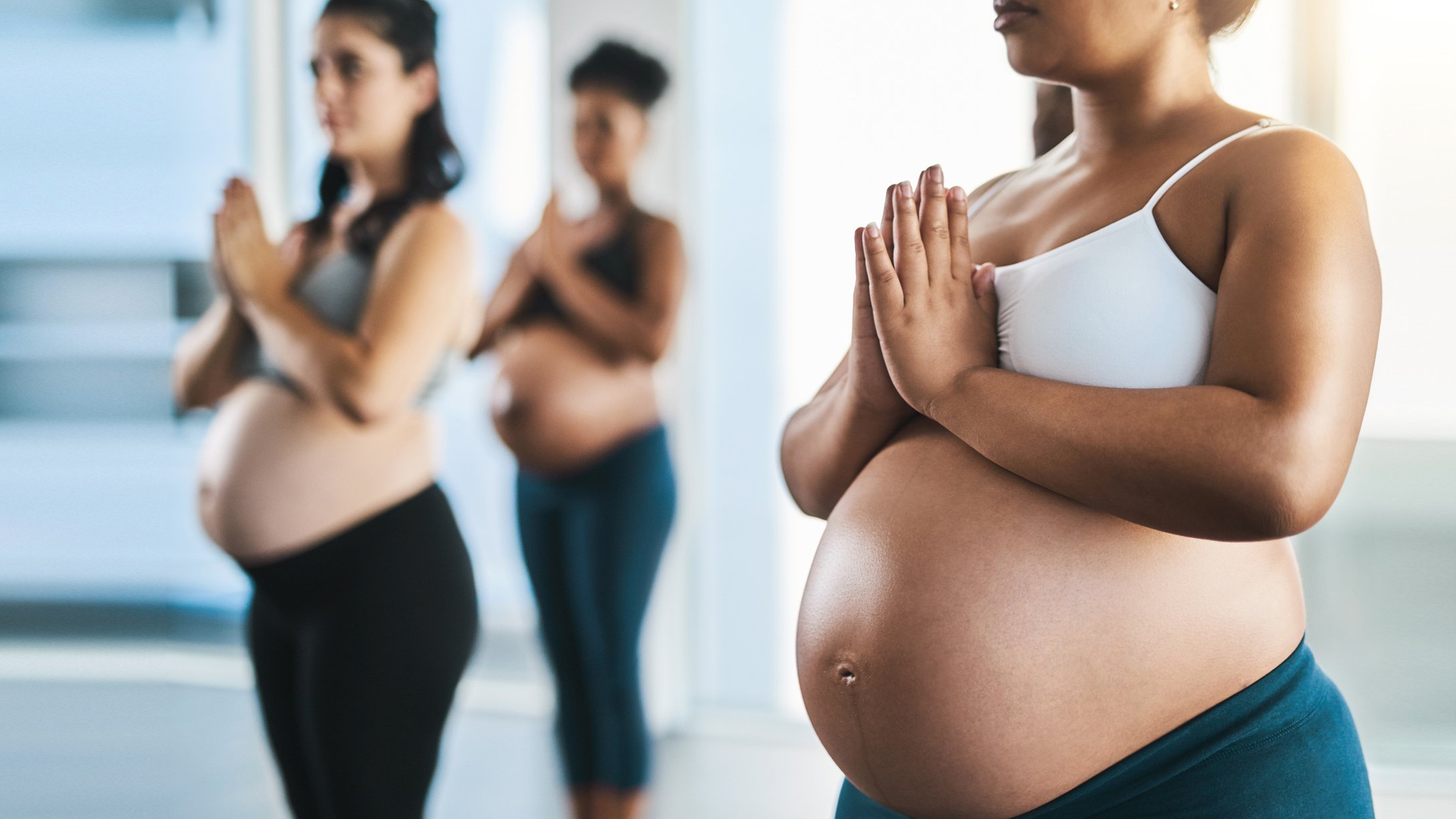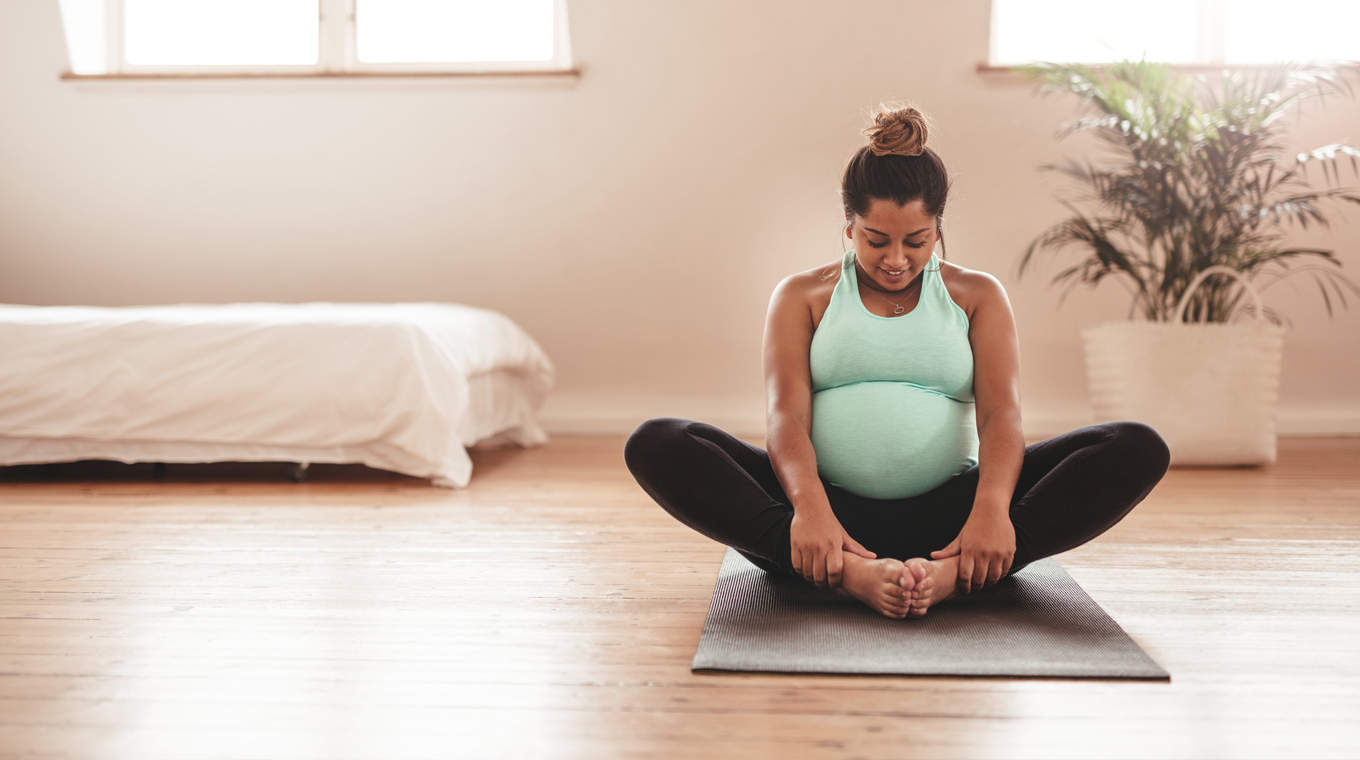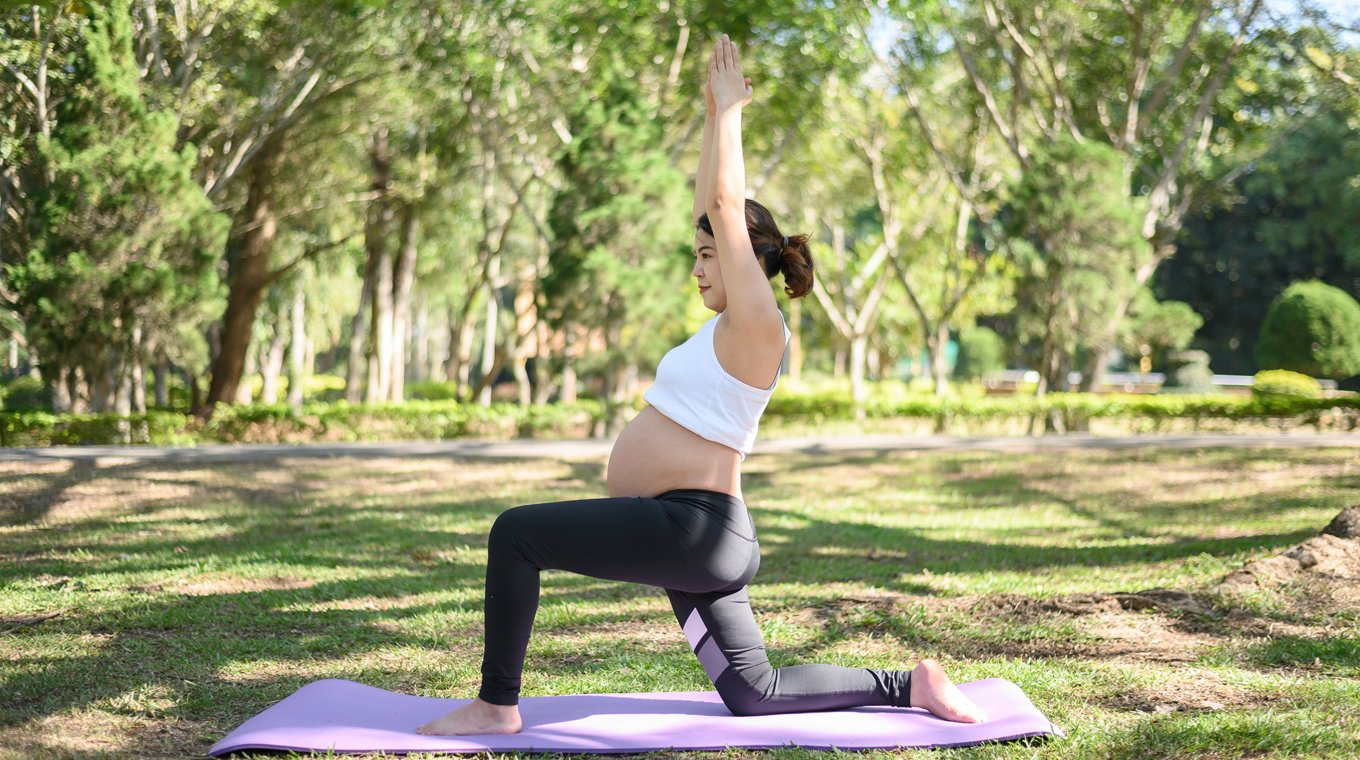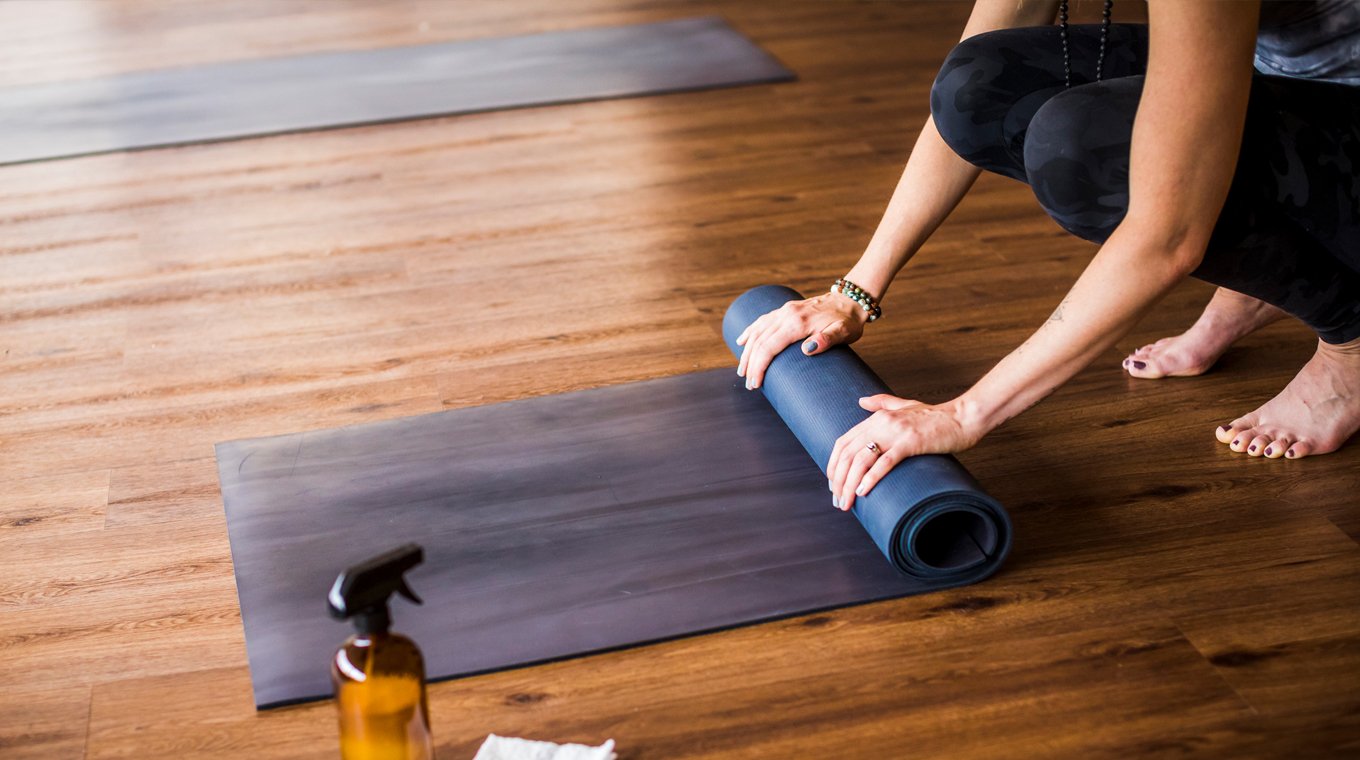
In this article
Just because you’re pregnant doesn’t mean you have to give up exercising. Getting movement in is actually important for a healthy pregnancy. In most cases, safe exercise can help with back pain, depression, excessive weight gain and more — just be sure to check with your doctor first. Consider low-impact movement, like prenatal yoga. Yoga has a slew of health benefits — especially for pregnant people.
“We recommend beginning exercise or continuing to exercise as soon as you become pregnant,” Dr. Margie Davenport, Ph.D., director of the Program for Pregnancy and Postpartum Health at the University of Alberta in Canada, told the New York Times.
“When I was pregnant with my son, everyone kept telling me to get rest, tons of rest in bed. That was easy since I was always tired but I just couldn’t lay in bed the whole time,” Kimberlee Leonard previously told Mom.com. “I enrolled in prenatal yoga and swimming because I felt getting out and being active would be best for both me and my baby.”
Read on to learn more about yoga for pregnant moms.
Prenatal yoga benefits

Prenatal yoga is a childbirth-preparation class that helps pregnant moms by focusing on poses that help increase strength, mental stability, flexibility and breathing. Below are the benefits of prenatal yoga:
- Reduce lower back pain
- Improve balance
- Reduce nausea
- Improve sleep
- Reduce stress and anxiety
- Decrease headaches
- Reduced risk of preterm labor
- Lowered risk of intrauterine growth restriction
- Effective breathing, which can help during labor
Yoga poses for pregnant moms

If you’ve consulted your doctor and are ready to start a prenatal yoga flow, then grab a mat and a bottle of water (don’t forget to stay hydrated!). Prenatal yoga, hatha yoga and restorative yoga are the best yoga studio classes for pregnant people, so check out what studios are in your area and confirm you can attend.
If you want to break out the yoga mat at home, then read below for three gentle and easy yoga poses to try on your own.
1. Cat/cow pose helps with back pain and will come in handy if you experience “back labor.” On all fours, you can stretch the spine by breathing in and expanding your abdomen like a cow and then exhaling and arching your back like a cat.
2. Goddess pose is when you sink the lower half of your body into a slight squat — with feet facing outward in a 45-degree angle — and then hold your arms out and connect your thumb to your index finger in Gyan Mudra. Keep your spine erect and gaze forward. Then rise up again and release your hands. This pose helps with balance.
3. Mountain pose helps strengthen the spine and provide some much-needed relief to your back. Stand tall with your feet facing forward and at about the width of your hips. With an erect spine, let your arms hang down to the sides of your body. Stretch your hands to the sky and have your palms meet in Namaskar Mudra as you inhale. Tilt your head back without putting pressure on your spine. Hold for 10 seconds and release and relax your body.
Yoga poses to avoid when pregnant

Not every yoga pose is safe for pregnant moms and it’s critical to be safe when you exercise while pregnant no matter what. When in doubt, reach out to your doctor for guidance or any questions. If you ever feel dizzy or uncomfortable, stop doing that pose immediately. Here are some starter things to avoid during prenatal yoga.
- Hot yoga, in which the room is heated to 90 degrees or more, is dangerous because it can cause overheating, which may impact fetal development.
- Avoid poses that stretch or twist the abdominal muscles because it can lead to discomfort, muscle soreness and injury.
- Don’t hold poses for too long.
- Don’t do headstands or shoulder stands.
- Don’t lie down on your back as it can put pressure on your vena cava, your body’s largest vein, and stop blood flow to your uterus. Opt for wedges or pillows to lift your upper body instead.
- Opt for support, like straps, chairs or blocks to provide more stability, especially during balancing poses.




